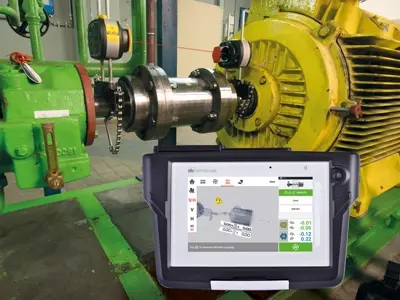
 Global Hotline
Global Hotline
Differences Between LCD, LED, and OLED Displays, and Which is More Suitable for Industrial Control Equipment

1. LCD (Liquid Crystal Display)
Principle: LCD displays use liquid crystals that alter their optical properties in response to an electric field to control light passing through, thus creating images. LCD displays typically require a backlight to illuminate the screen.
Advantages:
- Lower cost.
- High resolution, suitable for applications requiring detailed displays.
- Relatively low power consumption.
Disadvantages:
- Narrow viewing angles; viewing from the side may result in distortion.
- Poor black level performance, with blacks not appearing as deep.
- Backlight uniformity issues can occur.
2. LED (Light Emitting Diode Display)
Principle: LED displays use light-emitting diodes as the display source. Some LED screens are actually LCD screens with LED backlighting. True LED displays (such as OLED) use self-emissive LEDs for each pixel.
Advantages:
- High brightness, suitable for bright environments.
- More vibrant colors and better display quality.
- Wider viewing angles.
Disadvantages:
- Higher cost, especially for high brightness and high resolution versions.
- Display uniformity may vary in some cases.
3. OLED (Organic Light Emitting Diode Display)
Principle: Each pixel in an OLED display emits light through organic materials, providing higher contrast and deeper blacks.
Advantages:
- Extremely high contrast with deeper blacks and more vibrant colors.
- Very wide viewing angles with consistent color and brightness.
- Fast response time, suitable for applications requiring rapid updates.
Disadvantages:
- Higher cost.
- Potential for burn-in, where static images can leave a residual image after prolonged display.
Which is More Suitable for Industrial Control Equipment?
Choosing the appropriate display technology depends on specific application needs:
- LCD: Suitable for situations with limited budgets and where high resolution and detail are required. It is effective for stable displays but may not perform as well in extremely bright environments or where high contrast is needed.
- LED: If the environment has strong lighting and higher brightness and color performance are needed, LED is a good choice. It performs well in brightness and viewing angles while being more cost-effective compared to OLED.
- OLED: Suitable for applications that require high contrast, wide viewing angles, and accurate color reproduction. Ideal for high-end industrial control devices, but may not fit all budgets due to higher costs.
In summary, for most industrial control equipment, LED displays generally offer a good balance of cost and performance. If the budget allows and the display quality requirements are extremely high, OLED displays can be considered.
If you have any questions about the industrial control equipment display, Gelivable is happy to provide technical support. Our email is: cao@gelivableglass.com
Here is Gelivable’s case study in the field of charging station display screens.
- Laser Detector Display Module: https://www.kanoudisplay.com/solution/industrial-control/41.html
- eismic Exploration system Display Module: https://www.kanoudisplay.com/solution/industrial-control/31.html
For more case studies, please follow Gelivable Display Modules.